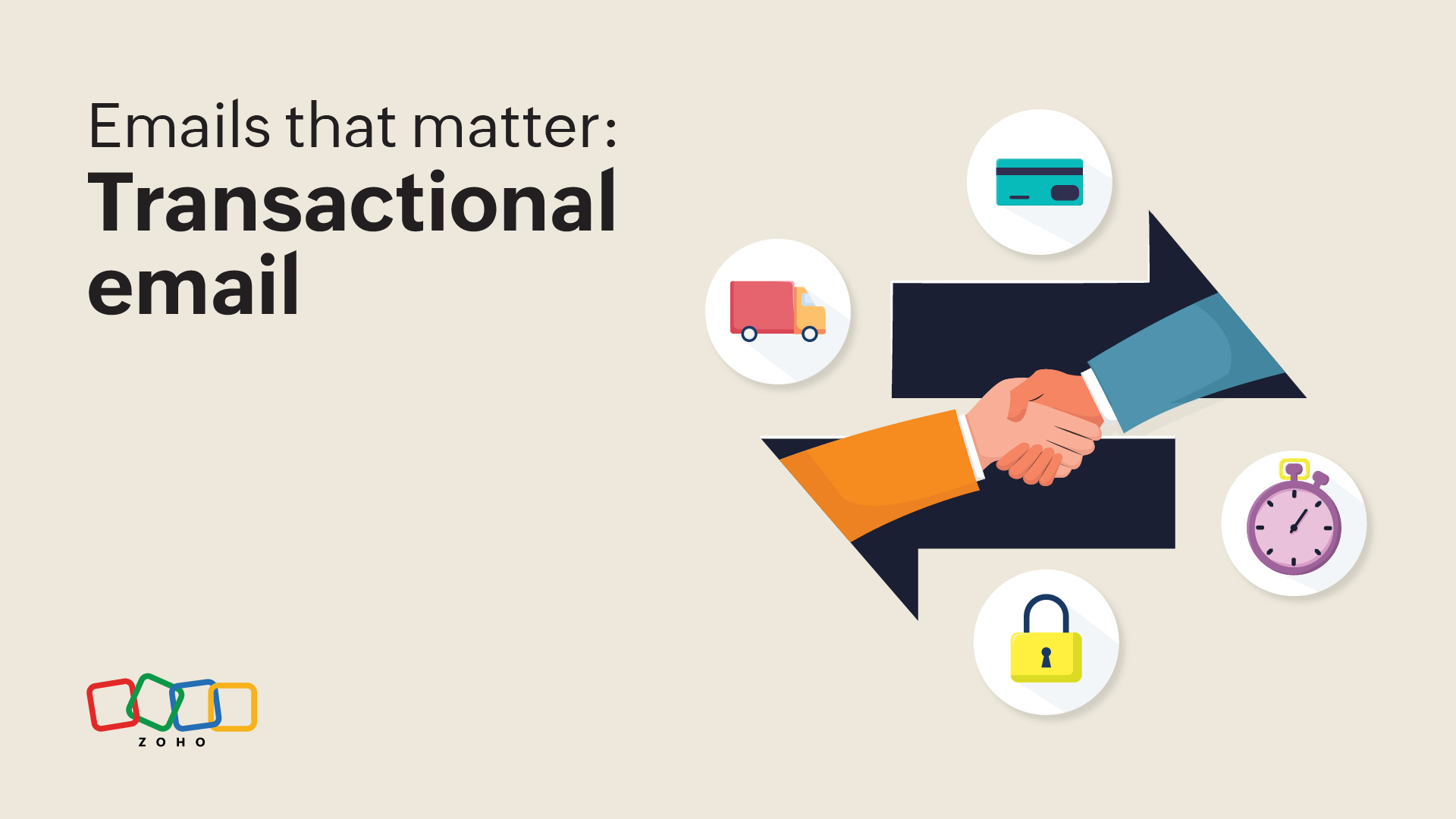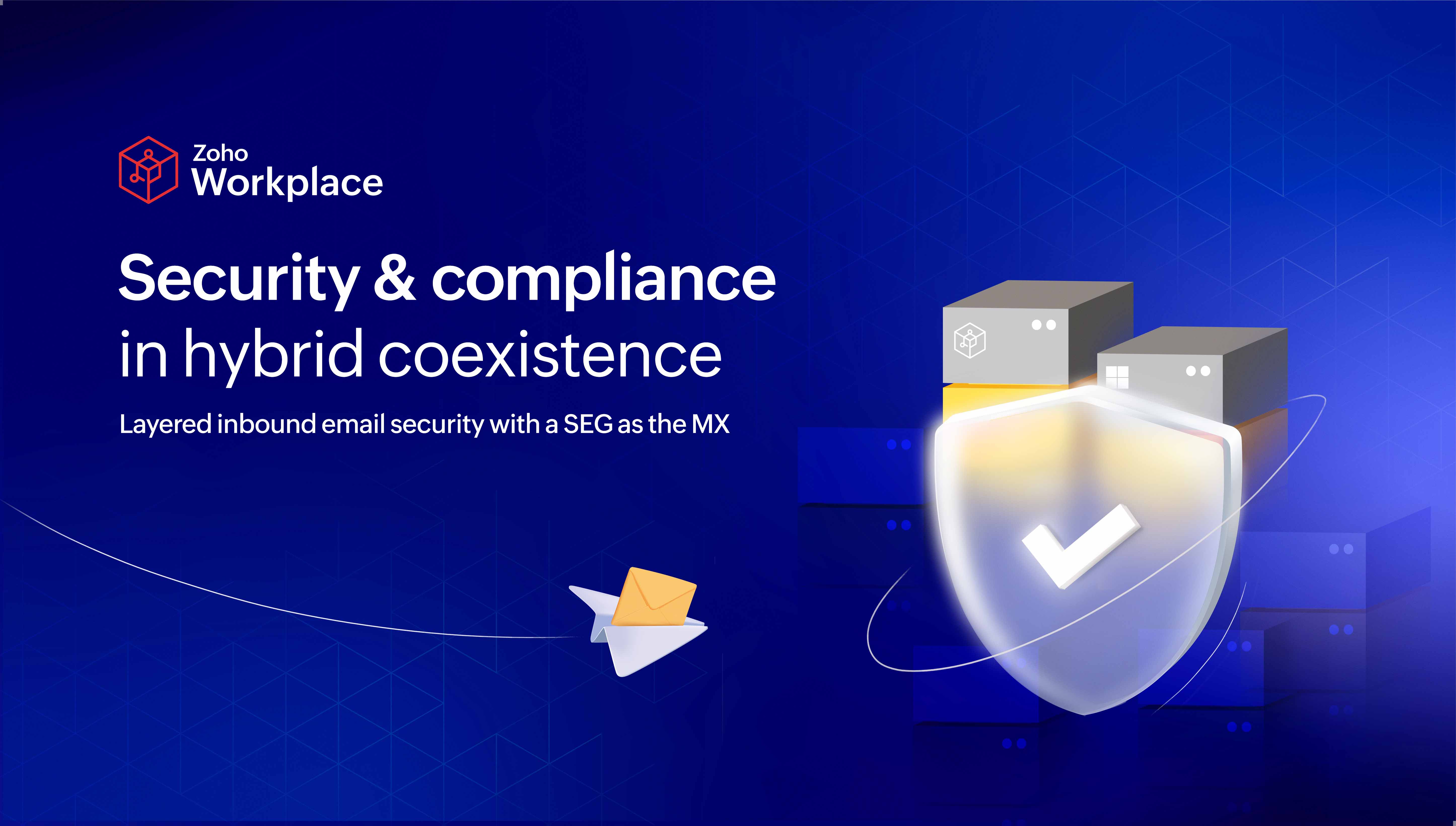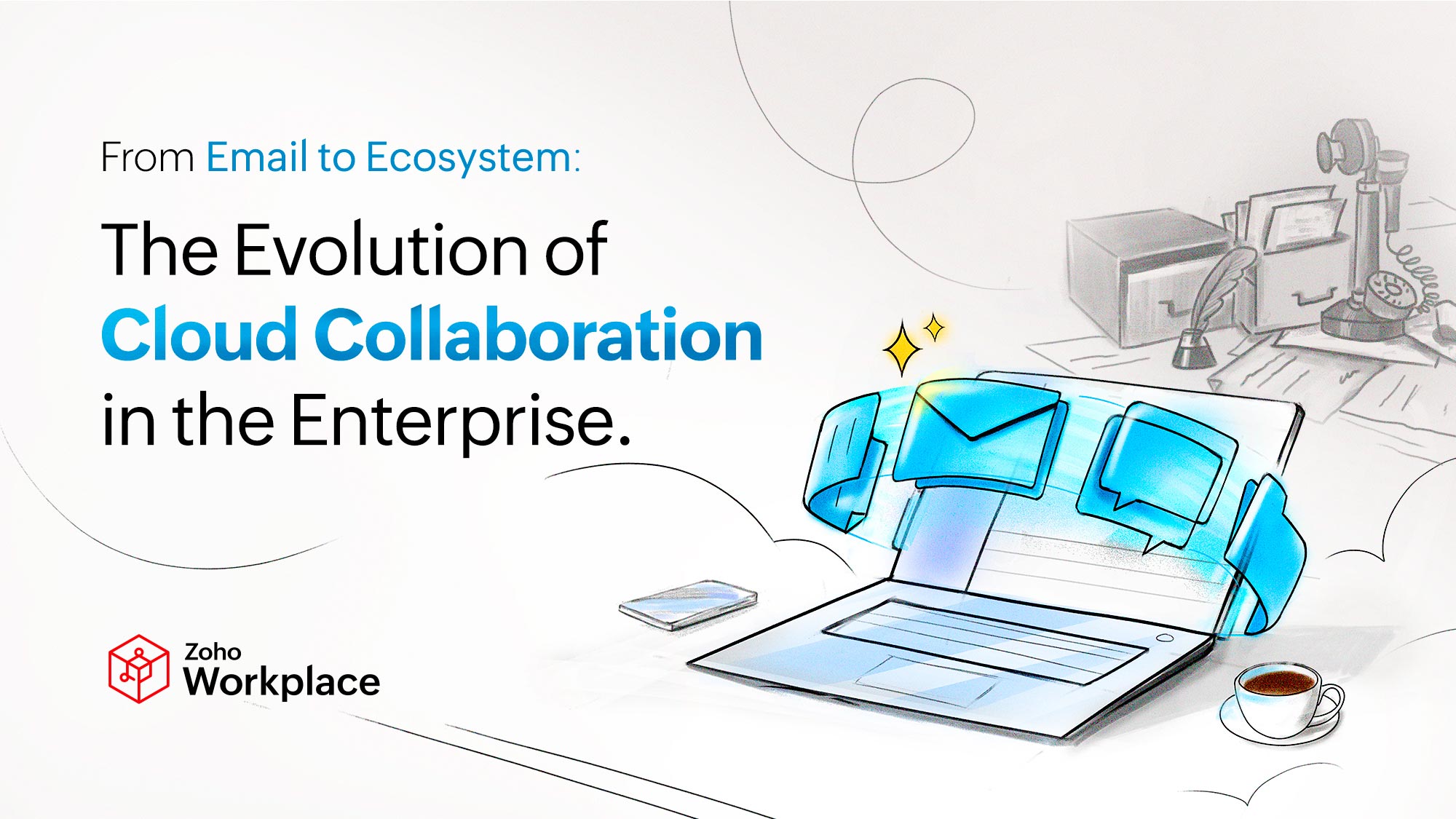- HOME
- All Products
- Emails that matter: Transactional email
Emails that matter: Transactional email
- Published : August 25, 2023
- Last Updated : December 8, 2023
- 968 Views
- 8 Min Read
In this article of our series on email automation, we delve into the significance of transactional emails. These mission-critical communications are essential for delivering real-time updates and actionable information to recipients. As you navigate the realm of transactional emails, remember that each preceding article has illuminated different dimensions of email automation, collectively painting a comprehensive picture of its impact on modern workplaces.
Read more:
- Email automation: Streamlining operations in the workplace
- Business emails: Embracing efficiency and security in the workplace
- Marketing emails: Harnessing the power of customer-centric strategies
- Behind the scenes: How operational emails synchronize IT and enterprise workflows
Transactional emails are crucial to modern communication, especially when it comes to facilitating crucial contact between businesses and their customers. These emails are sent out in response to particular user activities, guaranteeing the prompt delivery of important messages such as order confirmations, account changes, password resets, and receipts. Customer experiences are improved, and trust in the company's communication channels is increased, thanks to reliable transactional email delivery that ensures your customers receive these time-sensitive alerts immediately.
These emails have a specific function that goes beyond promoting information, making them unique from marketing emails. The difference may be seen in both their content and objectives. Transactional emails concentrate on providing crucial information on user activities, whereas marketing emails are made to advertise products, services, or offers. While transactional emails deliver useful, personalized, and frequently required information to maintain seamless user experiences, marketing emails aim to engage and convince recipients.

Operational touchpoints
Transactional emails hold significant value in various industries because they provide timely information to users based on specific events or actions, for example, license renewal reminders from government agencies, and industries such as professional services that require periodic service renewals. They can also include appointment reminders in the healthcare industry that are critical to ensuring patients attend their scheduled appointments, enhancing patient care, and minimizing no-shows. In e-commerce, order confirmations are vital to confirming successful purchases and maintaining customer trust.
Configuration and stakeholders for each transactional email type may involve different triggers, automation rules, and roles within organizations.
Here are some key operational touchpoints of transactional emails:
| User account management | Welcome emails: Sent to new users upon account creation, providing login credentials and a warm introduction to the platform or service. Account verification emails: Triggered for user email verification during account registration or security updates. |
| ̌Transactional notifications | Order confirmations: Sent to customers with order details and payment confirmation after they’ve successfully completed an online purchase. Shipping and delivery updates: Triggered upon order shipment, providing tracking information and delivery status. |
| Transactional alerts and reminders | Appointment reminders: Sent to users with scheduled appointments or events to reduce no-shows and improve scheduling efficiency. Service or subscription renewal notices: Triggered to inform users about upcoming renewals or subscription expirations. |
| User activity and engagement | Password reset emails: Sent to users upon requesting a password reset to maintain account security. Activity and notification emails: Triggered by specific user interactions, such as social media updates, friend requests, or comments. |
| System and service notifications | Server downtime or maintenance alerts: Sent to inform users about planned system maintenance or unexpected service disruptions. Payment and invoice reminders: Triggered to remind users of pending payments or invoice due dates. |
| User feedback and surveys | Feedback and survey emails: Sent to gather user feedback, opinions, or conduct customer satisfaction surveys. |
| Error handling and notifications | Error reports and incident alerts: Triggered to notify stakeholders about critical errors, system failures, or security breaches. |
| Real-time data and analytics | Real-time system alerts: Sent to notify administrators or IT leads about critical system events or performance issues. Analytics reports: Triggered to provide regular updates on system usage, website traffic, or application performance. |
Architecture and product landscape
Transactional email architecture distinguishes itself from both business and marketing emails in terms of purpose, content, and technical implementation. Transactional emails are typically triggered by predefined events within an application, system, or user activity. This architecture demands integration with core systems and databases to gather real-time data and deliver accurate updates.
Central to this architecture is the establishment of email delivery systems that ensure efficient routing and timely transmission of emails. SMTP servers play a pivotal role, acting as the intermediaries that process, authenticate, and relay transactional emails to recipients' inboxes. Businesses deploy redundancy and failover mechanisms to maintain uninterrupted communication even in the face of system failures. Load-balancing strategies distribute email traffic across multiple servers, preventing bottlenecks and optimizing performance. Failover mechanisms kick in seamlessly in case of server outages, ensuring continuous email delivery without disruption.
Security remains a critical concern in transactional email architecture. Implementing robust encryption protocols, such as TLS, safeguards the confidentiality of sensitive information during email transmission. Proper authentication mechanisms, including SPF, DKIM, and DMARC, verify the authenticity of transactional emails and protect against spoofing and phishing attacks.
Product landscape
The product landscape offers a suite of tools and APIs that help developers integrate transactional emails with core applications and their workflows. These APIs facilitate setting up triggers within the application, linking them with the appropriate templates and content. They offer technical customization options, allowing developers to format and structure emails according to the application's branding and requirements. For instance, in an e-commerce platform, order confirmation emails are automatically triggered upon successful payment, with relevant order details dynamically inserted into the email template.
APIs for tracking email delivery status, open rates, and click-through rates offer essential insights for monitoring and optimizing email performance. Transactional email product providers also offer features like throttling, rate limiting, and scalability management to ensure smooth delivery even during high traffic periods.
Vendor landscape
Choosing the ideal vendor involves understanding the unique needs, business scale, and technical capabilities within the organization. It's essential to strike a balance between functionality, budget, and scalability.
Some vendors like Zoho provide comprehensive solutions encompassing both marketing and transactional emails, ensuring a unified communication approach. Others specialize solely in transactional emails. Then there are industry-specific vendors that tailor their services to sectors like e-commerce, finance, and healthcare, aligning with specific requirements.
Subscription strategies differ as well, with suppliers providing pay-as-you-go plans, tiered pricing depending on email volume, or flat-rate models.
Navigating challenges
Navigating the challenges of transactional emails is vital for efficient communication and enhanced user experiences. Addressing issues like deliverability, security, compliance, and personalization requires strategic approaches. By implementing encryption protocols, segmenting email lists, and embracing localization, businesses can ensure seamless and effective transactional email interactions.
| Challenges | Addressing challenges |
| Deliverability issues: Ensuring that transactional emails reach recipients' inboxes and avoid being marked as spam. |
|
| Security concerns: Protecting sensitive information within transactional emails from cyber threats and unauthorized access. |
|
| Compliance challenges: Ensuring that transactional emails adhere to legal and regulatory requirements, such as the CAN-SPAM Act, GDPR, and industry-specific rules. |
|
| Personalization and contextualization: Delivering relevant and personalized content in transactional emails to enhance user engagement and experience. |
|
| Localization: Addressing diverse audiences with distinct language preferences and cultural contexts. |
|
| Monitoring and reporting: Tracking delivery and engagement performance of transactional emails to assess effectiveness and troubleshoot issues. |
|
| Template management: Ensuring consistent branding and content across various transactional email types and user interactions. |
|
| Integration complexities: Integrating transactional email systems with existing business applications, databases, and workflows. |
|
| Email engagement and feedback:Encouraging recipients to interact with transactional emails, provide feedback, and take desired actions. |
|
| Handling unsubscribes: Providing an easy process for recipients to unsubscribe from transactional emails when they no longer wish to receive them. |
|
Wrapping up
With each transactional email sent, there’s a significant opportunity to reinforce brand loyalty and improve the user experience. In this age of connectivity, businesses that navigate the challenges of transactional emails expertly and with the recipient's best interests in mind stand to reap the benefits of effective communication and enjoy long-term customer relationships.
This article is co-authored by Sandeep Kotla and Vignesh S.
Sandeep is an accomplished inbound marketer at Zoho Corporation, specializing in digital workplace strategies, digital transformation initiatives, and enhancing employee experiences. Previously, he handled analyst relations and corporate marketing for Manage Engine (a division of Zoho Corp) and its suite of IT management products. He currently spends most of his time re-imagining and writing about how work gets done in large organizations, reading numerous newsletters, and Marie Kondo-ing his inbox.
Vignesh works as a Marketing Analyst at Zoho Corporation, specializing in content initiatives and digital workplace strategies. He's a passionate creator with a penchant for marketing and growth. In his free time, you can see him shuffling between books, movies, music, sports, and traveling, not necessarily in the same order.


